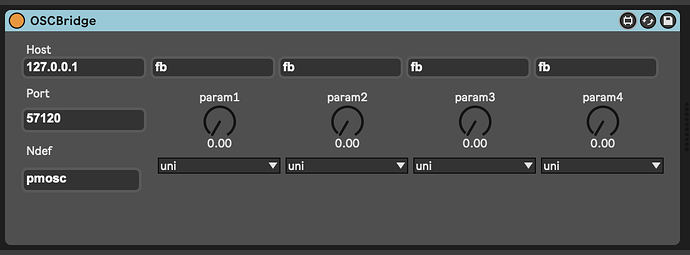What confused me is that you’re putting things into the ~notes array, but never using what you put in there.
x can hold only one synth. So when you do x.set, this cannot be polyphonic. So it turns out that x is the thing to delete, then.
For polyphony, each note-on needs to create an all new Synth instance. You cannot reuse an old synth instance with x.set there – x.set is changing the frequency of an old note, which is what you’d do in a mono synth.
~on = MIDIFunc.noteOn({
arg veloc, num, chan, src;
~notes[num] = Synth(\plucked,
[\freq, num.midicps,
... full arg list including control bus mappings...]
);
}, chan: 0);
Your example follows ccnum 9. Your code logic then retrieves a synth with note number 9 and sets its parameter. Thus ccnum 9 will control notes with frequency 13.75 only, and ignore all other notes.
That is, it isn’t about order of parameters – it’s about their semantics. A ccnum does not mean the same thing as a note num. Your notes array is indexed in terms of note numbers  so it is invalid to access synths from it based on cc numbers.
so it is invalid to access synths from it based on cc numbers.
IMO in a polyphonic context, the easiest way to handle MIDI CCs is with control buses.
// MIDI CC Func #1 for undefined CC channel #20
~cc1Bus = Bus.control(s, 1);
~cc1 = MIDIFunc.cc({
arg veloc, num, chan, src;
~cc1Bus.set(
veloc.linlin(0, 127, 0.0, 1.0),
);
}, ccNum: 20, chan: 0);
// MIDI CC Func #2 for undefined CC channel #21
~cc2Bus = Bus.control(s, 1);
// btw you wrote cc1 for this one too
// fixing that... the variable name collision means that your .free doesn't free everything
~cc2 = MIDIFunc.cc({
arg veloc, num, chan, src;
~cc2Bus.set(
veloc.linlin(0, 127, 0.0, 1.0),
);
}, ccNum: 21, chan: 0);
Then the note on func should do ~notes[num] = Synth(\plucked, [freq: num.midicps, \pan, ~cc1Bus.asMap, \synthesisParameter1, ~cc2Bus.asMap]); .
hjh
